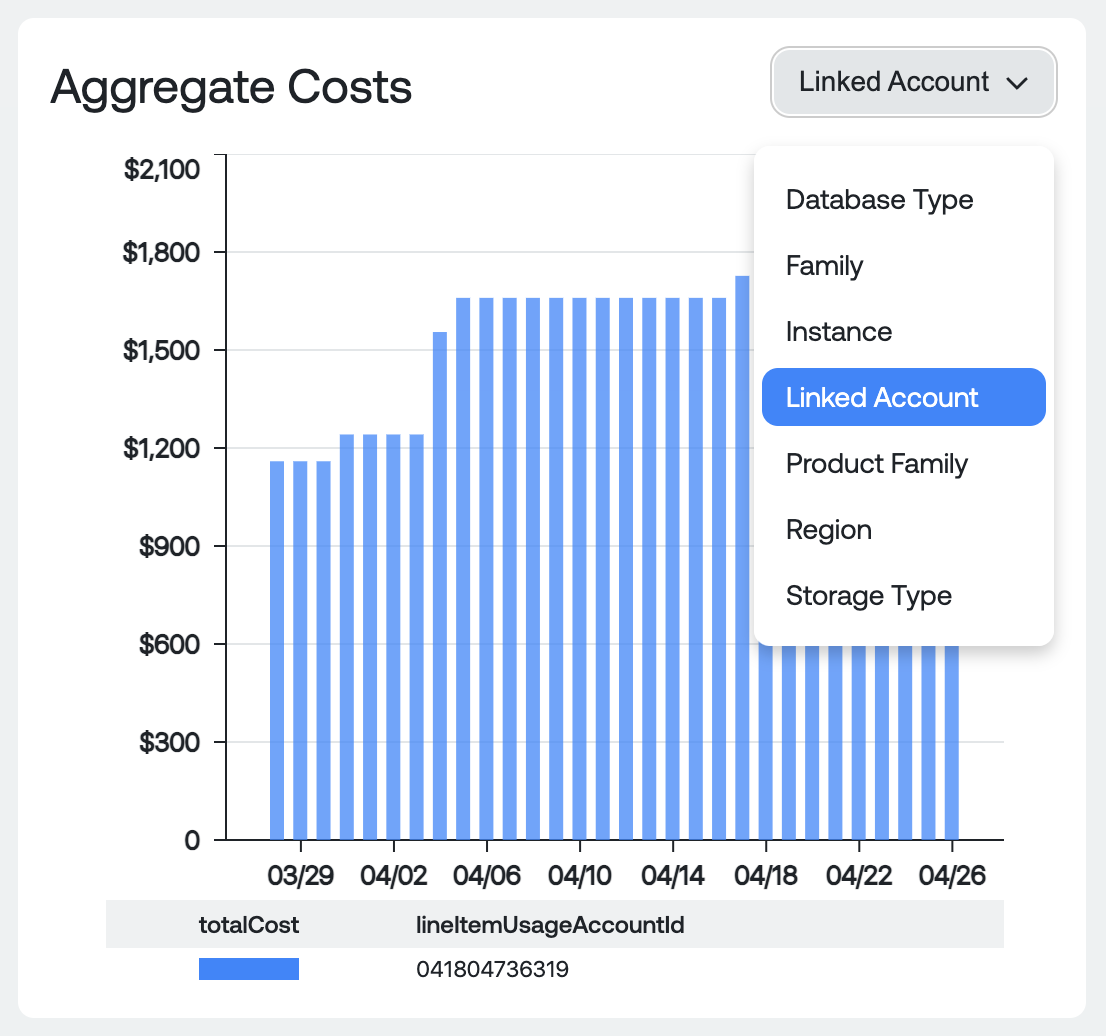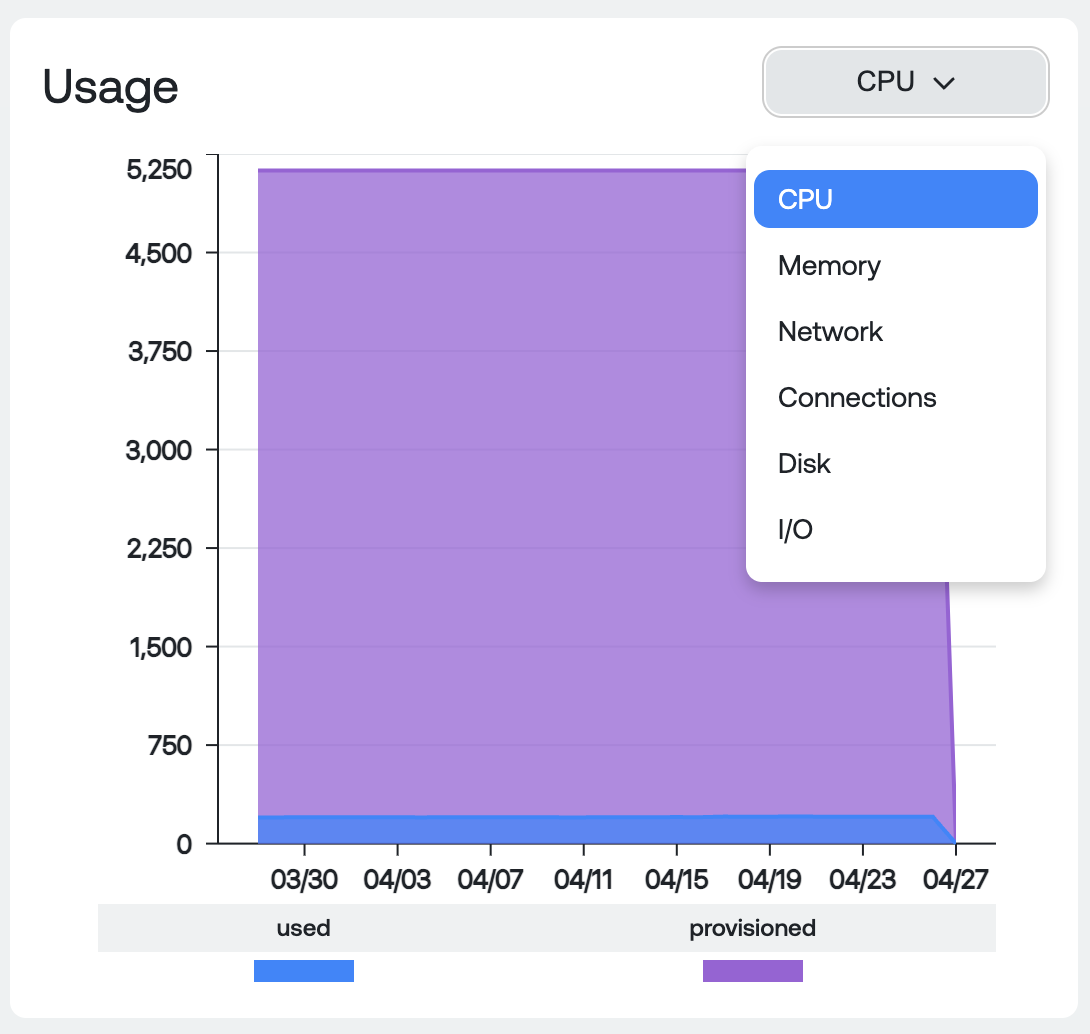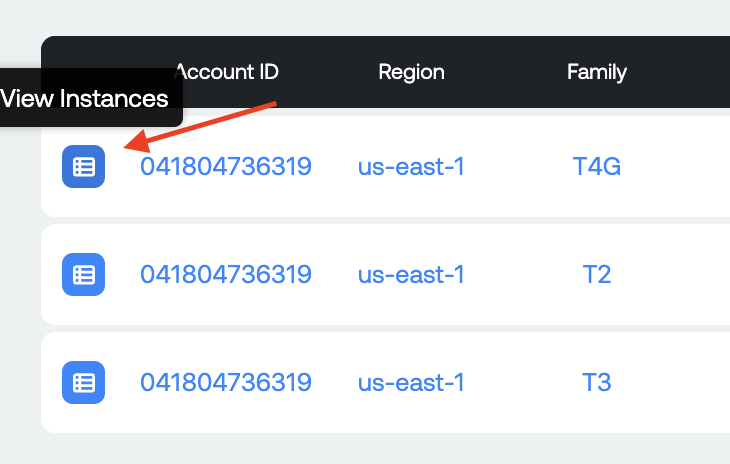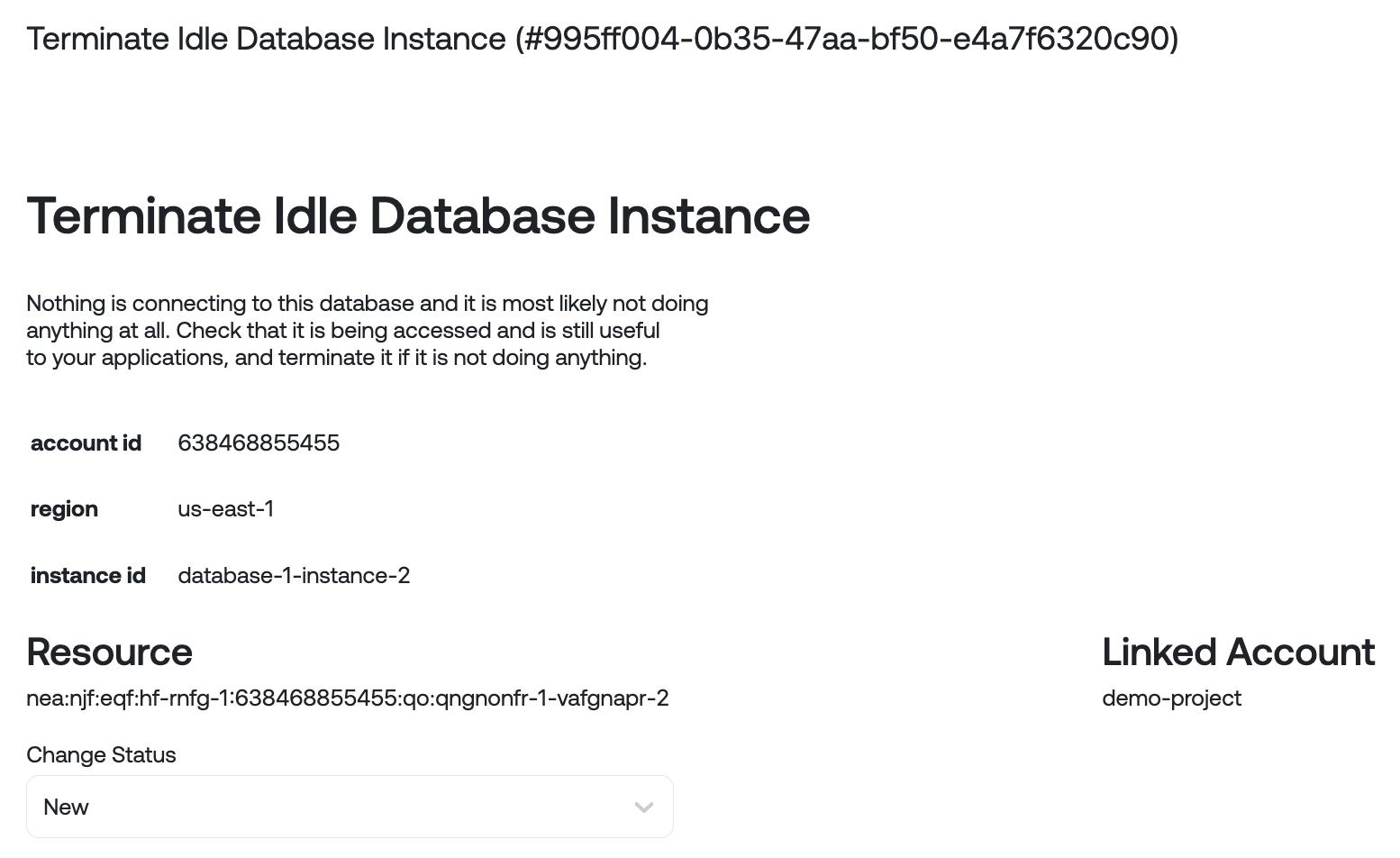Amazon RDS
AWS RDS Visibility Summary

Purpose: This section is designed to give you a high level overview of what you're spending on AWS RDS today.
Measures:
- Last Month Total Spend: This your total RDS spend last month. This is gross cost and does not include any discounts you receive.
- Monthly Spend to Date: This is your total RDS spend month-to-date for the current month. The percentage represents the difference between your current month-to-date spend compared last months-to-date spend. This is gross cost and does not include any discounts you receive.
- Forecasted Spend: This is a projection of your total RDS spend by the end of the current month. The percentage represents what your projected spend will be this month compared to last month.
- DB Storage Used: The amount of database storage used and the amount allocated.
Cost and Usage Graphs
Aggregate Costs Graph

Dimension Groupings:
- Database Type: The database engine running (PostgreSQL, MariaDB, MySQL, etc)
- Family: The instance family (t2, t3, m4, etc)
- Instance: The unique instance by Resource ID
- Linked Account: The Linked Account where the DB instances are running
- Product Family: Different types of associated DB spend (Database storage, Database Instance, Performance Insights, Storage Snapshots, etc)
- Region: AWS Region where the DB instances are running
- Storage Type: The storage type for the associated database instances
Usage Graph

Dimension Groupings:
- CPU: Total amount of provisioned and used DB cores
- Memory: Total amount of provisioned and used DB RAM
- Network: Total amount of network traffic in and out
- Connections: Total number of DB connections
- Disk: Total amount of used storage in GB/TB
- I/O: Total amounts of read I/O and write I/O
Instance and Family Table

Measures:
- Account ID: Account ID where the DB instances are running
- Region: Region where the DB instances are running
- Family: Instance family of the DB instances
- Type: Type of DB instances (associated with family) General Purpose, Memory Optimized, Compute Optimized, etc.
- Database Type: Database engine
- Instance Count: Total amount of unique DB instances
- Instance Units: Total number of AWS DB units (For example, 16 Cores = 32 units). This is the normalization factor used by AWS.
- Cost: All costs of running the associated DB instance (RAM, CPU, Network, Storage, etc)
- Provisioned vCPU: Total amount of provisioned cores grouped within the Account, Region, Family and Database Type.
- Provisioned RAM: Total amount of provisioned RAM grouped within the Account, Region, Family and Database Type.
- Network: Total amount of network traffic grouped within the Account, Region, Family and Database Type.
- Used Disk: Total amount of used disk in the grouped DB instances by Account, Region, Family, and Database Type.
View Instances Report

View Instances table

Measures:
- Resource ID: Unique AWS generated Resource ID of the associated DB instance
- Cost: Total cost of the DB instance
Instance: Instance type and sized of the DB instance - vCPU: Amount of provisioned vCPU
- vCPU utilization: Average vCPU utilization
- Provisioned RAM: Amount of provisioned RAM
- RAM Utilization: Average RAM utilization
- Network Bytes: Total amount of network traffic in and out
- Used Disk: Total amount of used Disk
- Connections: Total number of DB connections over the time period
AWS RDS Optimization Summary

Before diving into what the recommendation insights numbers are, it is important to know the different types of recommendations that are potentially surfaced in Ternary for AWS RDS:
- Purchase RDS Reservation: Your RDS On-Demand usage during a specific time period matches categories that are eligible for a reservation. Recommendations might help you to reduce your costs. Reservations provide a discounted hourly rate compared to On-Demand pricing.
- Terminate Idle DB Instance: Nothing is connecting to this database and it is most likely not doing anything at all. Check that it is being accessed and is still useful to your applications, and terminate it if it is not doing anything.
- Downgrade Database Instance Class: The database instance class is over-provisioned. Consider downsizing to the next available instance type.
- Upgrade Database Instance Class: The database instance class is under-provisioned. Consider upsizing to the next available instance type.
- Increase Allocated Storage: Consider increasing the amount of allocated storage by 10% or enabling storage autoscaling to this database instance. Storage autoscaling automatically expands storage space to a specified maximum storage.
Measures:
- Current Recommendations: Total amount of savings available across all recommendations. Active represent recommendations that do not have a status of "Snooze". Snoozed represents recommendations that have a status of "Snooze" set by a user for any reason.
- Past Recommendations: Total amount of previous recommendations available across all statuses available in Ternary (these are historical recommendations). Includes recommendations with a status of Implemented, Inaccurate or As-designed after discussion with your engineering team and the appropriate status assigned to the recommendation in ternary.
- Total Current Recommendations: Total number of current recommendations available.
- Total MTD spend: Total gross EC2 spend month to date. The percentage represents your amount of MTD spend compared against this time last month.
RDS Recommendation table

Measures:
- ID: Unique ID of the recommendation in the Ternary platform. Each recommendation will have a unique ID for reference later.
- Recommendation type: The type of recommendation (Please see above for a description of possible recommendations).
- Resource (and Account): Unique resource name and associated Account it exists in.
- Open: Whether the recommendation has a status of New
- Status: Status of the recommendation, as assigned in the Ternary platform. Possible values: New, Accepted, As-Designed, Implemented, and Inaccurate.
- Created On: The date that the recommendation was created in the Ternary database.
- Potential Savings: Potential savings if the recommendation is actioned.
When you click on any one of the Table Rows, you'll see a pop up appear:

Details of a single recommendation. You can also snooze a recommendation for a specific period of time or set a particular status.

Other Useful Functionality
Export Visibility and Optimizations: Export the current Visibility categories and Compute optimization recommendations as CSVs
For Visibility, you can export the categories table below the graph

For Optimizations, you can export the recommendations table below the graph

Updated 6 months ago
